Tanzania
Hiking & Trekking
Mount Kilimanjaro – The Roof of Africa
Standing proudly at 5,895 meters (19,341 ft), Mount Kilimanjaro is not only Africa's highest peak but also the world's tallest freestanding mountain. Its dramatic rise from the plains of northern Tanzania makes it one of the most iconic sights on the continent.
Kilimanjaro's slopes encompass a stunning range of ecosystems — from lush rainforest and moorland to alpine desert and icy glaciers — offering a breathtaking journey through changing landscapes and climates.
Though the climb is non-technical, it remains a challenging and deeply rewarding adventure, accessible from the nearby towns of Arusha and Moshi, just a short distance from Kilimanjaro International Airport.
Whether viewed from below or conquered from its summit, Mount Kilimanjaro offers an unforgettable trekking experience — one that embodies the spirit of adventure and the beauty of Tanzania's wild highlands.
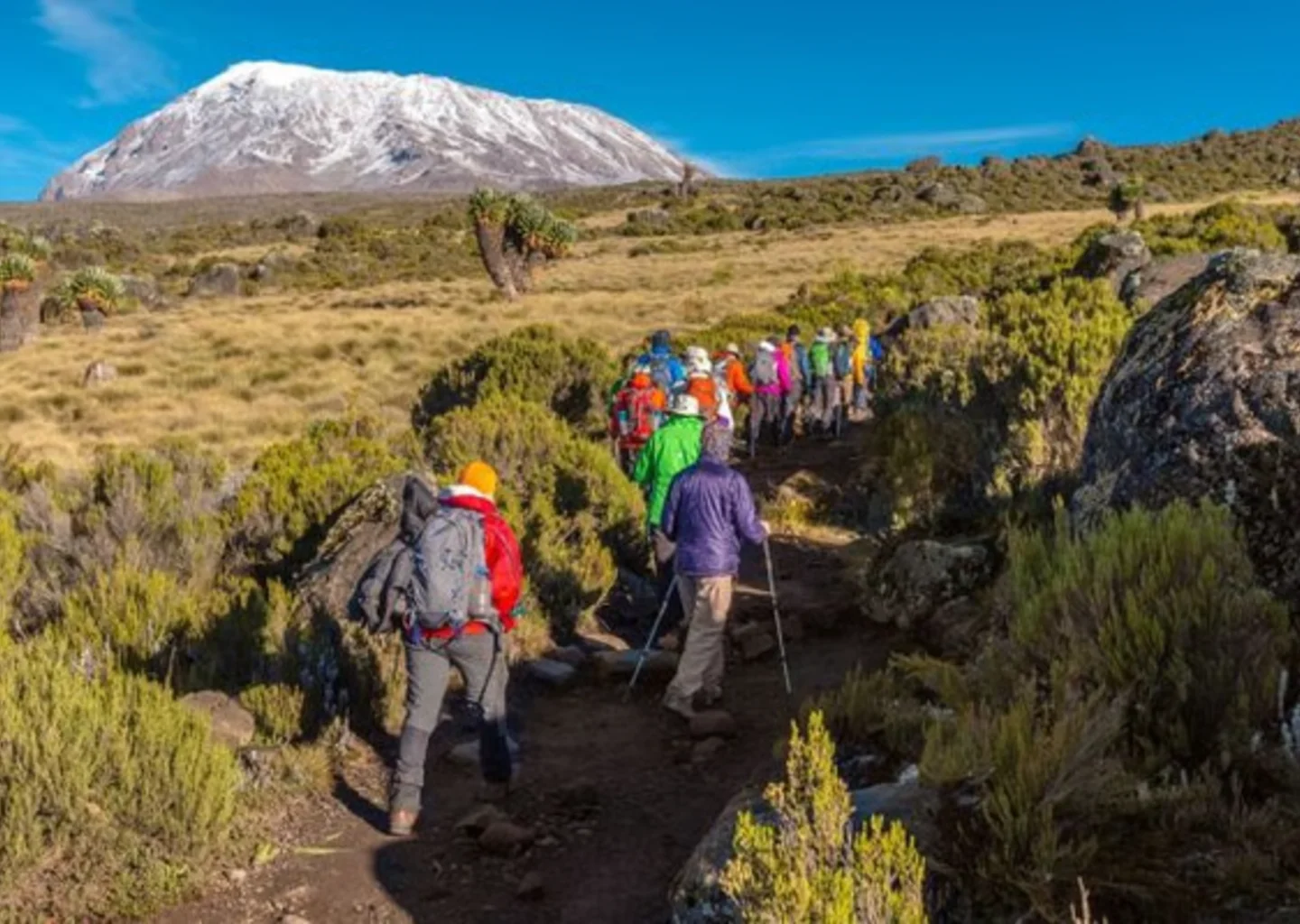
Popular Mt. Kilimanjaro Tours

Description
Known as the "Whiskey Route," it's more challenging than Marangu but offers better acclimatization and higher summit success. Steep in parts, including the Barranco Wall, yet achievable with preparation.
Landscape
Begins in the southwest, crossing forests, moors, and four climate zones to the Shira Plateau and Lava Tower.
Highlights
Dramatic scenery and diverse landscapes.
Difficulty
Moderately difficult; ~85% success rate.
Distance
61 km | 6–7 days
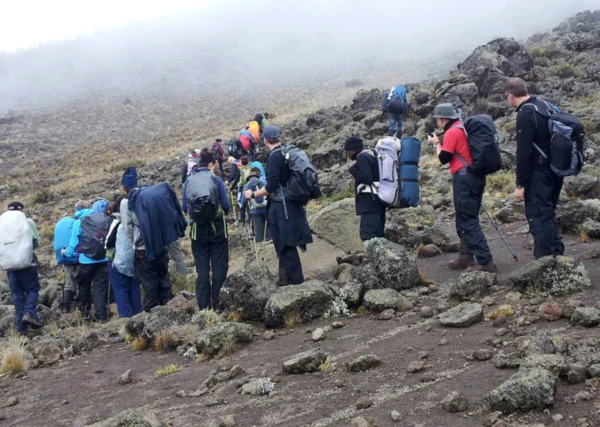
Description
Known as the "Coca-Cola Route," it's popular for its hut accommodation. Though considered easier, its short duration limits acclimatization, lowering summit success rates.
Landscape
Starts in rainforest and moorland, turning rugged near the top. Uses the same path up and down.
Highlights
Hut stays with basic comfort and soft drinks.
Difficulty
Moderate; easier terrain but low summit success.
Distance
70 km | 5–6 days
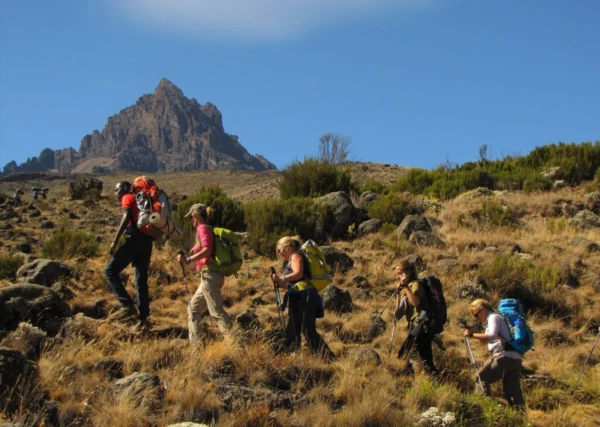
Description
Starting west of Kilimanjaro, Lemosho is both the most scenic and least crowded route. It joins the Shira Plateau, climbs the Barranco Wall, and summits via Uhuru Peak, descending through Mweka.
Landscape
Begins in lush forest, passes moorlands and the Shira Plateau, with stunning views of Mount Meru.
Highlights
Diverse scenery, fewer trekkers, and high success rate.
Difficulty
Moderate; ~90% success rate.
Distance
67 km | 7–8 days

Description
A shorter, steeper route starting at 3,500m via 4×4 drive, skipping rainforest sections. While scenic, limited acclimatisation makes it more challenging with a lower success rate.
Landscape
Crosses the vast Shira Plateau with dramatic views, then joins the Barranco Wall and scree slopes toward the summit.
Highlights
Panoramic views and fewer crowds.
Difficulty
Difficult; ~80% success rate.
Distance
58 km | 6–7 days

Description
The only route starting from Kilimanjaro's northern side, it's drier and ideal for the wet season. With a gentle gradient and well-spaced camps, acclimatization is easier, and fewer trekkers create a more remote feel.
Landscape
Passes through farmland, rainforest, woodlands, and the rocky "Saddle" before descending via Marangu.
Highlights
Peaceful trail, occasional wildlife, and stunning Mawenzi Peak views.
Difficulty
Relatively easy; ~85% success rate.
Distance
74 km | 6–7 days
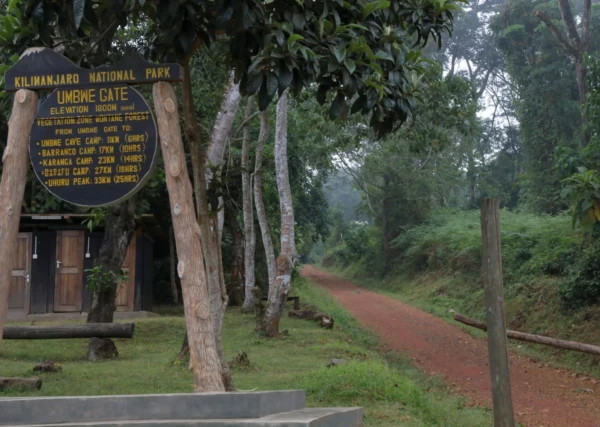
Description
A steep, direct trail with little time for acclimatisation, making it one of Kilimanjaro's toughest routes. Best for highly experienced trekkers using the full 7 days.
Landscape
Starts in rainforest before ascending sharply onto rocky mountain slopes.
Highlights
Quiet, remote, and challenging — ideal for expert climbers seeking solitude.
Difficulty
Very difficult; ~70% success rate.
Distance
48 km | 5–7 days
Planning Your Kilimanjaro Trek
As the saying goes, "If you fail to plan, you plan to fail."
Climbing at high altitude can be risky, so careful preparation is vital. Choose a trusted tour operator with a strong record of summit success and book early, as Kilimanjaro is a popular destination.
For the best chance of reaching the top, opt for the longest route you can afford to allow proper acclimatization.
Ensure you have comprehensive travel insurance that includes medical evacuation, just in case of emergencies.
You'll also need specialized clothing and gear—refer to our detailed packing guide for Kilimanjaro, and test everything before your trip to avoid surprises on the mountain.


Training for Kilimanjaro
Although Kilimanjaro is a non-technical climb, it is physically demanding, especially at higher altitudes. Trekkers walk for several hours each day, so your body must be prepared for sustained exertion.
The best preparation includes hiking in hilly or mountainous terrain and practicing stair climbs to build stamina and endurance. Begin training at least three months before your trek, combining different types of exercises that suit your fitness level.
It's also wise to consult a doctor for a physical examination before departure to ensure you are in good health and ready for the challenge.
Guides and Porters
By law, all Kilimanjaro climbers must be accompanied by a licensed guide, supported by a team of porters who carry luggage, food, and essential equipment. They also set up and clear campsites, prepare meals, and handle cleaning duties.
Choose guides with credentials from reputable organizations and work with trekking companies that follow ethical practices, ensuring fair wages and porter welfare—such as Gosheni Safaris. Asking about a guide's experience and checking reviews from past clients will enhance your climb and contribute to sustainable tourism.

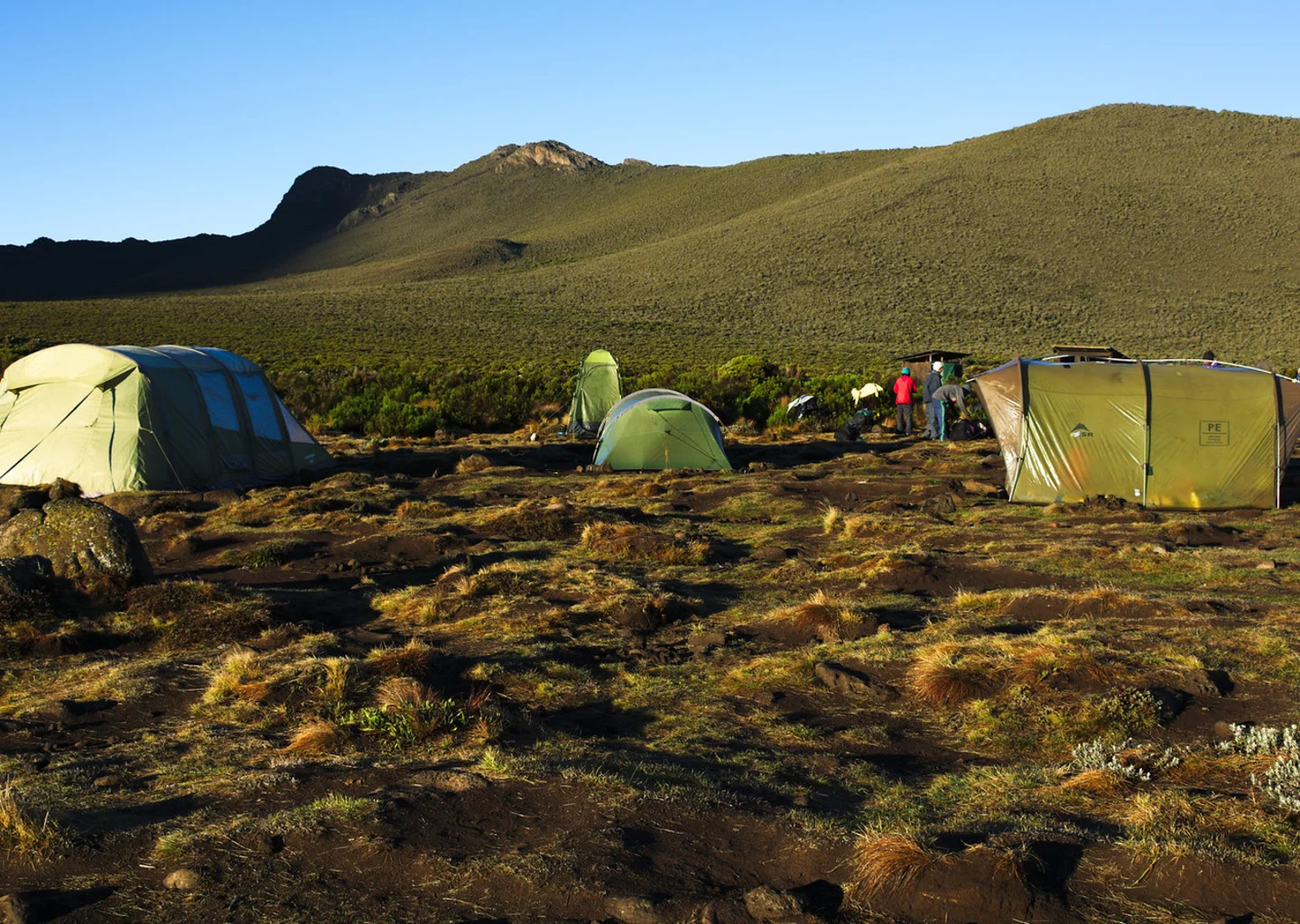
Daily Life on the Trek
Your day usually starts early, around 06:00, with a hearty breakfast before breaking camp. A lunch hamper is provided for the trail, and you'll hike through the day, stopping to eat before continuing to the next campsite in the late afternoon.
Evenings are spent resting after dinner—it's wise to have a dry, comfortable set of clothes for inside your tent. Note that there are no toilets or washing facilities on the mountain, so be prepared. Hydration is essential, so drink plenty of fluids throughout the day.
Who Is Able to Climb Kilimanjaro?
Mount Kilimanjaro has been successfully summited by climbers as young as 7 and as old as 88, including individuals with various abilities. The most important factor is determination.
You also need to be fit enough for a multi-day, high-altitude trek over challenging terrain. To maximize your chances of reaching the summit, take your time, walk slowly, and rest frequently—this helps reduce the risk of altitude sickness and makes the climb more enjoyable.
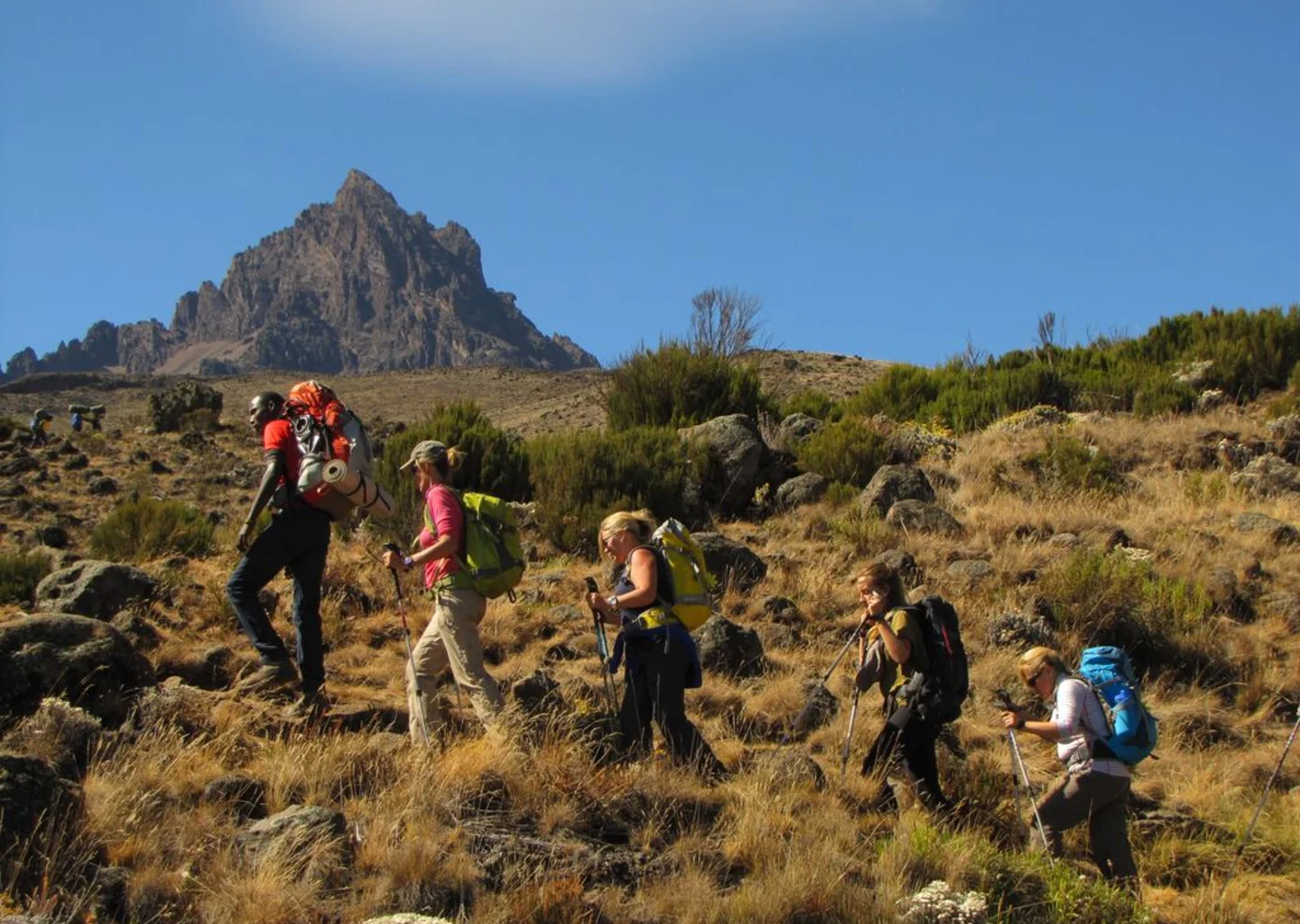
Prepare to Conquer Mount Kilimanjaro
Get ready for the adventure of a lifetime! Our complete Kilimanjaro packing guide ensures you have all the essential gear, clothing, and equipment to make your climb safe, comfortable, and unforgettable.
